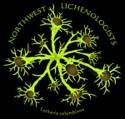Thanks for the ideas.
The crust fungus idea is interesting. I went looking for pictures and found some that are blue (slightly different in color from my unknown.) The overall form I see in the photos of some crust fungus looks flat and thus similar to my unknown.
Thank you for pointing me to Chlorociboria aeruginascens. The color is is very similar to my unknown. I enjoyed learning about them. The descriptions of Chlorociboria note their cup shaped fruiting body. My unknown is quite flat.
Thanks for the reference about fungal pigments. The pigment xylindein made by Chlorociboria seems similar in color to my unknown.
The crust fungus and Chlorociboria are both are described as growing on wood. My unknown was not on wood - it was on rock.
We scraped a bit off the rock and brought it back to look at with a dissecting scope. The turquoise color material seems to be a layer on the surface of a paler color material of similar texture. The material is hard (though one could poke a needle through it and make a hole). We put it in water and it didn’t change. Texture seemed uniform, with an impression of material made up of uniform tiny bits that reflected light in way that gave a slight “speckled” appearance.
Could see nothing that looked like cells or hyphae. Even wondered if it was some kind of mineral. But now we’re wondering if it is some kind of biological secretion.

